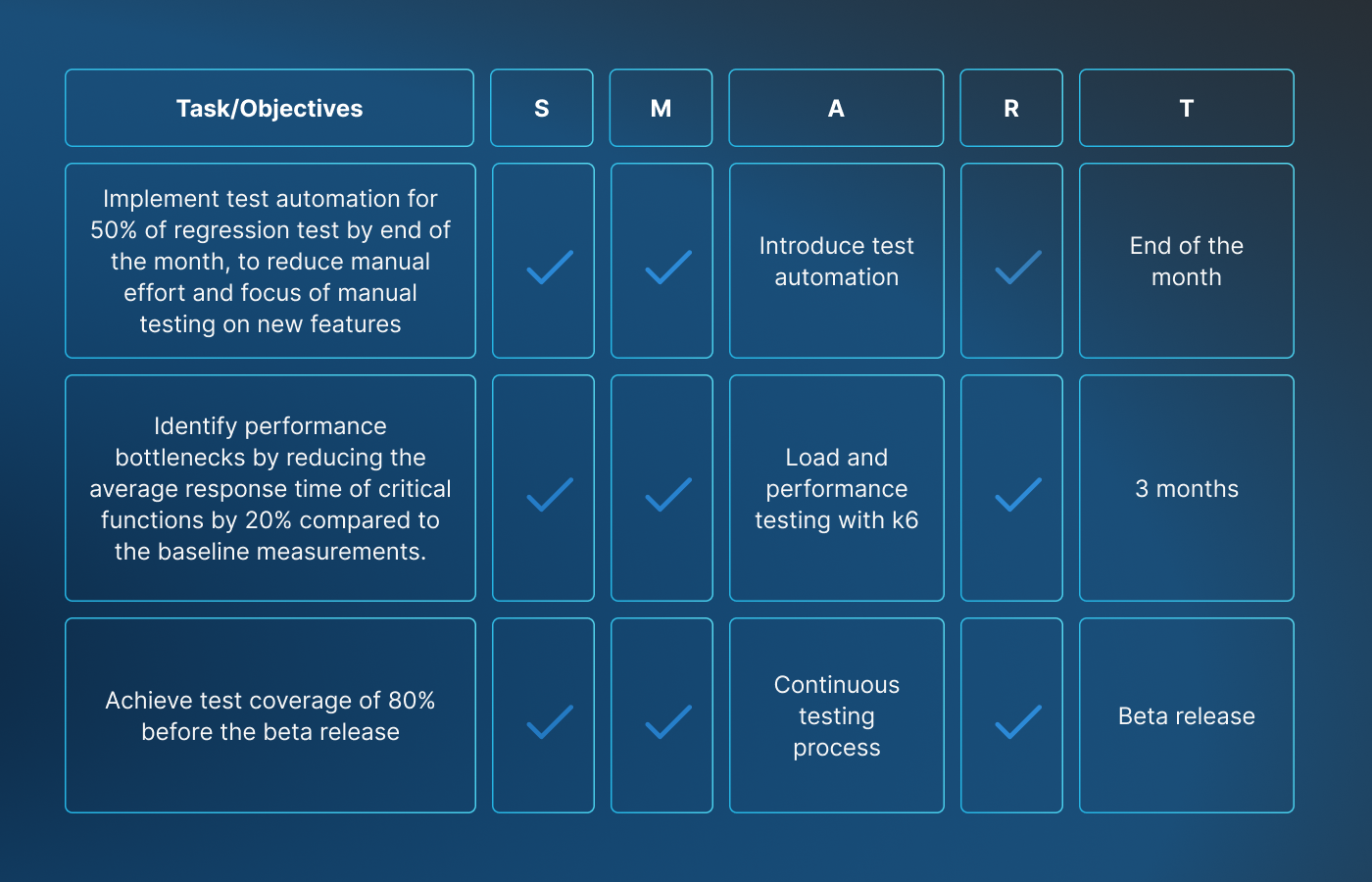Quality Assurance (QA) is essential in today's fast-paced software development environment to guarantee the delivery of trustworthy products free of critical bugs. But unfortunately, this can sometimes feel like an elusive goal. When it comes to maintaining a comprehensive quality assurance process, small businesses or start-ups race to bring their innovative ideas to market and often find themselves juggling a multitude of challenges, with limited time and resources being chief among them.
In this blog, we will discuss setting reasonable expectations through the unique struggles faced by startups and small companies when it comes to ensuring product quality.
Read on and discover tips on how to maximize QA efforts and gain a competitive advantage in the dynamic world of innovation.
Prioritize Testing Areas
To make the most of limited time and resources, testing activities must be prioritized. You can find some tips on prioritization techniques like the Eisenhower Matrix in one of our blogs. Focus on what is important: critical features, core functionalities, and areas that are prone to defects.
Collaborate closely with your development team to identify the most crucial aspects of the application that need testing. You will make the most of your limited QA resources with the help of this focused strategy.
Define Clear Objectives
It is crucial to establish clear QA objectives in order to make the most of the time and resources available. Decide what you want your testing efforts to accomplish, then define SMART (specific, measurable, achievable, relevant, and time-bound) goals to achieve that. Your QA team will be guided by this clarity and be sure to focus on the most important features of the application.

Adopt Test Automation
Test automation can significantly boost the efficiency and effectiveness of your QA process, particularly when resources are limited. Your QA team can concentrate on more complicated scenarios by automating time-consuming and repetitive test cases. It may take some initial investments to set up a test automation system, but this can have significant long-term benefits in terms of faster tests and improved testing coverage.
Utilize Agile Methodology
Using an agile development strategy can enable effective QA work with limited staff and time. Agile enables continuous integration, rapid feedback cycles, and iterative development, ensuring that QA can keep up with the development speed. At Povio, we utilize agile methodology, and projects tend to evolve during each sprint among collaborators and shareholders. Agile testing focuses on ensuring quality throughout the Agile software development process.
The team demonstrated a strong commitment to meeting the client's requirements by employing an agile development approach in their product development process.
- Chief Product Officer, Sneaker Marketplace
Early defect detection and expedited problem resolution might result from regular collaboration between developers and testers during agile practices.
Accept that perfection is unattainable
While QA strives for the highest degree of quality, it's crucial to understand that attaining perfection may be impossible in general, but it's considerably more difficult when resources are scarce. Every project involves trade-offs, and managing user expectations requires an awareness of these constraints. Focus on delivering a reliable and functional product with a great user experience rather than seeking perfection in every aspect.
QA work can be challenging, particularly for clients with limited time and resources. However, overcoming some obstacles can be made easier by having reasonable expectations and using a smart strategy. Clients can increase the effectiveness of their QA efforts by prioritizing testing areas, establishing precise objectives, utilizing test automation, adopting agile approaches, and accepting imperfections.
Keep in mind that quality assurance is a collaborative effort that necessitates efficient coordination and communication between the development and testing teams, as well as between project managers and clients. Clients can produce a high-quality product that matches user needs and exceeds expectations by applying the correct approach and mindset.
The QA process with the right amount of budget will bring much better results, as all necessary processes will be covered. However, it's also possible to get satisfactory results when time, budget, and resources are limited. Cutting QA might result in much higher costs and lower customer satisfaction. If you want to know why QA should be considered an investment and not an expense, read one of our previous blogs.
However, if you have enough resources for QA, then shift-left testing is a must. If you're interested in delving deeper into the topic of shift-left testing and how it can benefit your software development process, I recommend checking out our another blog post that explores the subject in greater detail.
